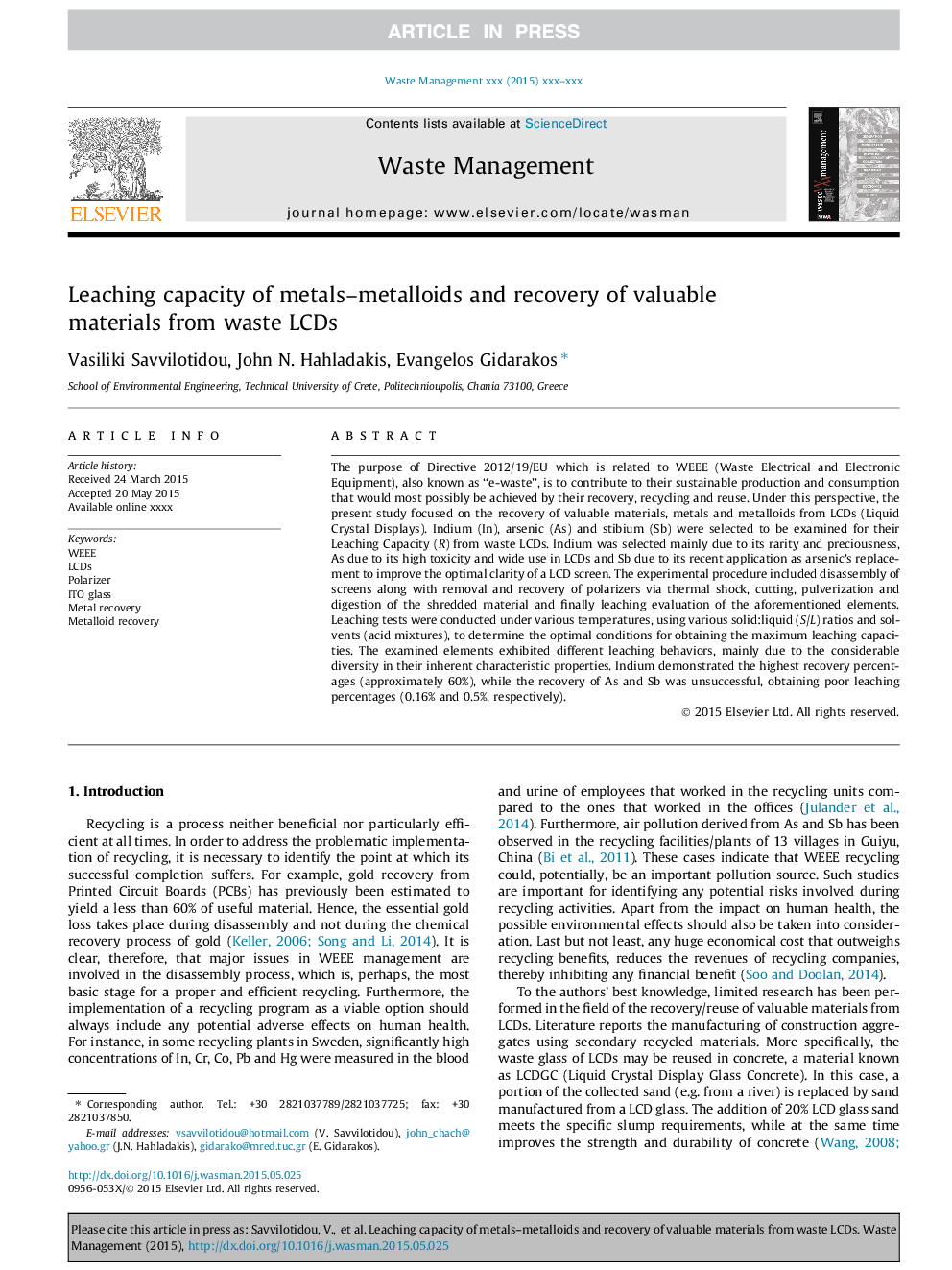| Article ID | Journal | Published Year | Pages | File Type |
|---|---|---|---|---|
| 6354346 | Waste Management | 2015 | 11 Pages |
Abstract
The purpose of Directive 2012/19/EU which is related to WEEE (Waste Electrical and Electronic Equipment), also known as “e-waste”, is to contribute to their sustainable production and consumption that would most possibly be achieved by their recovery, recycling and reuse. Under this perspective, the present study focused on the recovery of valuable materials, metals and metalloids from LCDs (Liquid Crystal Displays). Indium (In), arsenic (As) and stibium (Sb) were selected to be examined for their Leaching Capacity (R) from waste LCDs. Indium was selected mainly due to its rarity and preciousness, As due to its high toxicity and wide use in LCDs and Sb due to its recent application as arsenic's replacement to improve the optimal clarity of a LCD screen. The experimental procedure included disassembly of screens along with removal and recovery of polarizers via thermal shock, cutting, pulverization and digestion of the shredded material and finally leaching evaluation of the aforementioned elements. Leaching tests were conducted under various temperatures, using various solid:liquid (S/L) ratios and solvents (acid mixtures), to determine the optimal conditions for obtaining the maximum leaching capacities. The examined elements exhibited different leaching behaviors, mainly due to the considerable diversity in their inherent characteristic properties. Indium demonstrated the highest recovery percentages (approximately 60%), while the recovery of As and Sb was unsuccessful, obtaining poor leaching percentages (0.16% and 0.5%, respectively).
Related Topics
Physical Sciences and Engineering
Earth and Planetary Sciences
Geotechnical Engineering and Engineering Geology
Authors
Vasiliki Savvilotidou, John N. Hahladakis, Evangelos Gidarakos,
